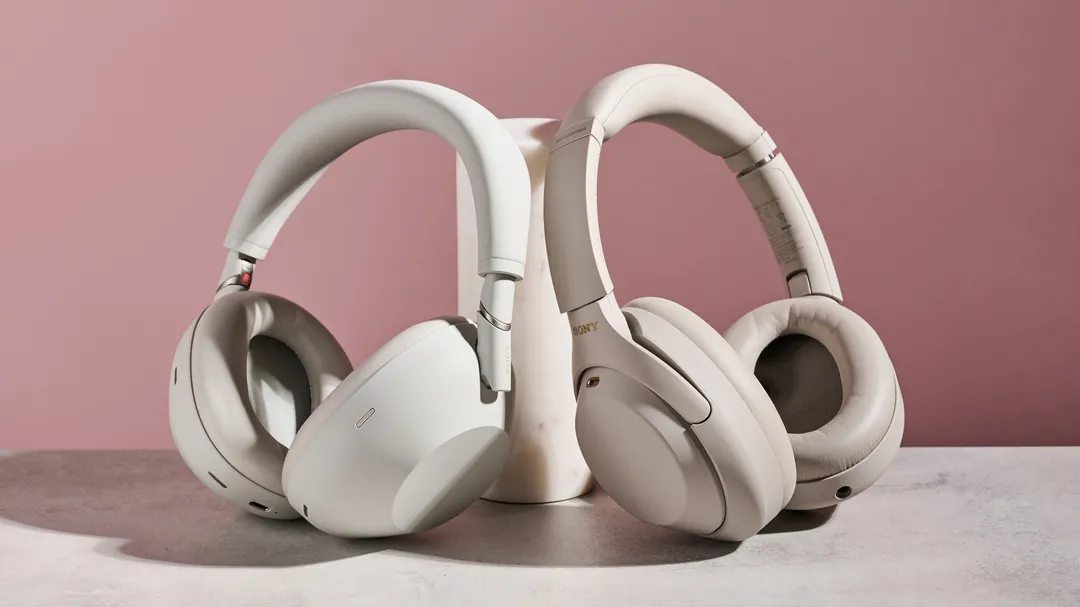
Sony WH-1000XM6: The New Champion of Noise-Cancelling Headphones?
For years, the Sony WH-1000XM series has reigned supreme in the world of noise-cancelling headphones. Now, the highly anticipated Sony WH-1000XM6 has arrived, promising to elevate the listening experience even further. But does the new flagship truly live up to the hype? This article dives into the details, comparing it against its predecessors and competitors to determine if it's worth the upgrade.
The Sony WH-1000XM6 aims to improve upon its predecessors in several key areas. According to experts, the biggest upgrades are in comfort, with a return to a folding hinge design; drastically improved noise cancellation that adapts to your surroundings; the addition of next-gen Bluetooth features like LE Audio, LC3, and Auracast; and enhanced sonic detail and dynamic expression.

While the XM6 comes with a higher price tag of £400 / $450 / AU$699, the older Sony WH-1000XM5 remains a very viable option, especially as it is currently available at a 30 percent discount. However, for those who can afford it, the XM6 is positioned to be the top choice for the next two to three years, based on Sony's typical release cycle.
Competition in the Premium Noise-Cancelling Market
The premium noise-cancelling market is fiercely competitive, with rivals like the Bowers & Wilkins PX7 S3 and Bose QuietComfort Ultra Headphones vying for the top spot. While the PX7 S3 might be more stylish and rivals the XM6 in sound precision and fine detail, it falls short in noise-cancelling ability. The Bose QuietComfort Ultra Headphones, while impressive, are surpassed by the XM6 in overall sound quality, battery life, and the sophistication of its noise cancellation. Experts note that the XM6's ANC performance is more natural and subtle, making it a better option for more users.
The Sony WH-1000XM6 also extends its lead over the Apple AirPods Max in sound quality, noise-cancelling performance, battery life, Android compatibility, and Bluetooth codec support. While Apple fans might still prefer the AirPods Max for iOS integration and spatial audio, the XM6 offers a more comprehensive package for a wider range of users.

XM6 vs. XM4: Is the Upgrade Worth It?
Comparing the Sony WH-1000XM6 against the older Sony WH-1000XM4, the XM6 offers substantial improvements in noise-cancelling, refined touch controls, and a more comprehensive EQ. New features include Auracast compatibility, Scene-based Listening, and Cinema Listening for spatial audio upmixing.
While the XM4 is still a capable set of headphones, the XM6's superior QN3 HD noise-cancelling processor and increased microphone count (12 vs. 7) provide significantly better ANC performance. The XM6 also offers a more balanced sound profile out of the box and increased sonic width.

Design-wise, the XM6 brings back the folding hinge, utilizes more durable metal hinges, and features a more comfortable headband . Although, the battery life remains at 30 hours with ANC on.
Ultimately, the Sony WH-1000XM6 emerges as a well-rounded package, offering top-tier noise cancellation, excellent sound quality, and a host of features. While the XM4 remains a budget-friendly option, the XM6 is the clear winner for those seeking the best possible listening experience.
Sony WH-1000XM6 vs. JBL Tour One M3: A Head-to-Head Comparison
The Sony WH-1000XM6 faces stiff competition from the JBL Tour One M3. The JBL Tour One M3 prides itself as one of the most future-proof headphones available today, offering lossless USB-C audio, Bluetooth 5.3, Auracast broadcasting, spatial audio, personal sound amplification, and customizable passthrough modes. The JBL also come with a unique SMART Tx accessory, where users are able to connect to wired sources wirelessly, adjust EQ, or share audio with other Auracast-compatible devices.

The XM6 distinguishes itself with a balanced sound signature and strong microphone quality. However, it lacks USB-C audio and Auracast broadcasting capabilities, which are becoming increasingly common in flagship models. The JBL Tour One M3 boasts a superior battery life, lasting 55 hours and 37 minutes with ANC on, compare to the XM6's 37 hours which positions clearly as the winner in this aspect.
While both headphones offer top-tier noise cancelling performance, the Sony WH-1000XM6 edges out the JBL Tour One M3 in microphone quality. Voices stayed clear and intelligible in any environment the headphones are in.
In conclusion, the Sony WH-1000XM6 has emerged as the new king of noise-cancelling headphones, setting a new standard for comfort, features, and performance. Its competition is tough, so consumers must prioritize their needs whether it's future-proof features such as in JBL Tour One M3 , or a solid daily listening experience such as in Sony WH-1000XM6.
What are your thoughts on the Sony WH-1000XM6? Do you think it's worth the upgrade? Let us know in the comments below.